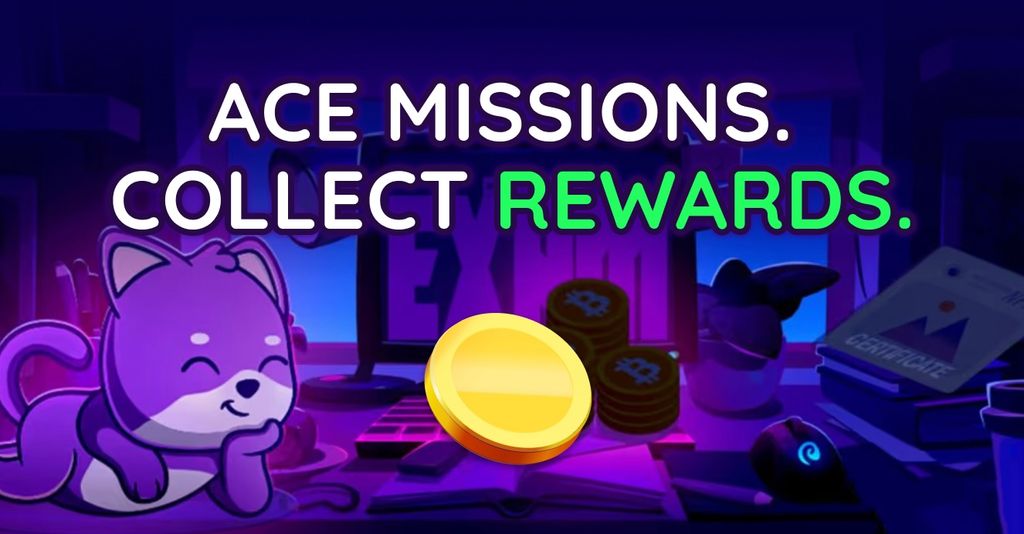Stop overpaying - start transferring money with Ogvio. Sign up, invite friends & grab Rewards now! 🎁
If you’re looking for a thorough Ruby VS Python comparison, look no further than this article! We all know how difficult it can be to choose a programming language to learn. This is even truer if you’re a complete beginner to the field of programming - it might even seem overwhelming, with so many options to choose from.
This is where comparison articles come in - whether it be a Python compare to Ruby, or any other two languages, these comparisons usually leave you with some sort of an idea of which of the two languages would suit you the best. And that is exactly what we’ll aim to do in this tutorial.
We’ll start by talking about the individual programming languages themselves. We’ll cover questions such as “what is Ruby used for?” and “why is Python good?”. After that, we’ll briefly go over some of the main differences between the two languages. Finally, after establishing some points of reference, we’ll compare and contrast both of the languages, and will try to decide whether Ruby or Python is worth learning.
Table of Contents
- 1. Learning More About Ruby and Python
- 1.1. Ruby
- 1.2. Python
- 2. What’s the Difference?
- 3. Criteria of Comparison
- 3.1. Community Support
- 3.2. Learning Curve
- 3.3. Salary
- 4. The Comparison
- 4.1. Which has better Community Support?
- 4.2. Which has a better Learning Curve?
- 4.3. Which has the better Salary?
- 5. Conclusions
Learning More About Ruby and Python
So, let’s begin this Ruby VS Python article by talking about the two programming languages in question. We must get to know at least a little bit of fundamental information about both Ruby and Python before we can start to analyze them. Let’s begin with Ruby.
Latest DataCamp Coupon Found:Ruby
Ruby was created in 1995, by a Japanese computer scientist Yukihiro Matsumoto. It’s a general-purpose, object-oriented programming language, which means that its intended use is to be applied on a day-to-day basis (or, in other words, it’s used for daily tasks). The object-oriented part is also really important - this means that the language uses objects in its processes, which allow either certain parts of a program or the whole program, in general, to be reused for other projects. Furthermore, object-oriented programming provides a clear modular structure for the programmer’s projects.
From the very get-go, Ruby was intended to be fun. This is something that is rarely mentioned in other Ruby VS Python comparison articles, probably because it isn’t an objective parameter of the programming language. That being said, it is still important to mention, since it’s one of the key points of the Ruby philosophy. Mr. Matsumoto has emphasized that Ruby has to be easy and fun to use, and has to focus on the “human” instead of the “computer” side of things when it comes to the actual process of programming.
Ruby features dynamic typing, automatic memory management, garbage collection, and many more features. It also a fully OOP language (Object-Oriented Programming), with inheritance, masterclasses, and everything in between.
Ruby also has the reputation of being very innovation-friendly - not only does it have a lot of features to choose from by default, but it also easily accepts most new implementations and updates (this is an important point for the Python VS Ruby comparison).
With that short overview of the Ruby programming language, you should now understand the very fundamentals on which the language is built. Now, let’s move on with the Ruby VS Python comparison and discuss Python.
Python
Created in 1991 by Guido van Rossum, Python is a high-level, general-purpose programming language. Same as Ruby, it is also fully object-oriented - the one difference that you can probably spot right away is that Python is a “high-level” language. What does that mean?
While Ruby stresses the human factor in programming, Python‘s main focal point is readability. The core philosophy behind Python is that it has to be super-easy to use. This is what the “high-level” part stands for - a high-level programming language possesses a very simple and easy-to-read syntax which is very similar to the common, everyday English language. This is also one of the main reasons why Python is so popular - the fact that it’s super easy to use attracts more and more people every single day.
Comparing Ruby vs Python, Python is mostly Linux-oriented, although it can be used on any other of the main platforms out there. It started to make rounds as soon as the information of it being used to manage such platforms as YouTube, Dropbox and Instagram went public. Ever since then, it has become one of the most commonly used programming languages in the world.
Since we’ve established some fundamental information on both of them, let’s quickly summarize the main points of just how these programming languages are different from one another.
What’s the Difference?
One of the very first differences that come up when thinking about these programming languages is the actual intended usage of these languages. People often wonder what is Ruby used for, or how does Python compare to Ruby - the fact of the matter is that while both of these languages revolve around a similar field of usage, things aren’t all that simple when you take a closer look. Ruby is almost explicitly used for web development purposes. While you may find that Python is also a very web development-focused programming language, it would be tough to say how does Python compare to Ruby in this aspect. Python is more commonly used in Linux development and is looked upon very favorably by academia.
Another big point in the Ruby VS Python comparison would have to be the actual types of the programming languages. Python is simple, while Ruby is flexible. What does this mean? Well, Python emphasizes simplicity over anything else - it usually has a single, straightforward way of achieving a certain goal. The opposite is true for Ruby - while it may not be as simple as Python, it offers developers multiple different ways to complete their tasks.
Finally, Ruby is very innovation-driven - it features creative coding and is constantly being updated. The same cannot be said about Python - this programming language is more conservative and values stability over constant innovations.
These are some of the main differences between Python and Ruby. Although they are not as technical as one might expect, their core philosophies do tend to attract people with different programming objectives. Now that you know what is Ruby used for and what’s so special about Python, there is one last thing that we need to do before we can jump into the Ruby VS Python comparison - we have to set certain key points for our analysis.
Criteria of Comparison
While there are multiple different ways to approach the Python VS Ruby comparison, there are still certain specific points that are relevant to every and all programming languages out there. These points are especially important when it comes to choosing - should you learn Ruby or Python? Which one is better? And that word - better - consists of many different things.
To make the most out of the comparison, let's review three distinct criteria - community support, learning curve, and salary.
Community Support
If you’ve already spent some time researching programming (as a general topic) online, you might have noticed that many people emphasize community support as one of the most important features that a programming language can possess. If a programming language, has a strong and dedicated community behind it, which in this case are Ruby vs Python communities, you can almost be certain that it’s doing something right. People that are passionate about their language of choice tend to be very active on online forums and groups, sharing their experiences with the language, its bugs, and their fixes, general usage tips and so on. This type of community is important not only because you can be sure that you’ll get some help if you encounter a problem with some certain points of the language. Such people are also usually very adamant about the general preservation of the programming language in question.
Furthermore, if a programming language has a strong community, chances are that there will be loads of information about the language found online. While this is relevant to everyone that uses the language, it is super important to newcomers of the industry that are choosing Ruby vs Python - with proper material, these people will be able to get the tropes ASAP, and start working with the programming language in no time.
Learning Curve
It is no secret that easy-to-learn programming languages are slowly but surely taking over the market. People are constantly searching for the “next easy thing” - it has become one of the more important features for a programming language to possess. Naturally, there are strong exceptions to this rule, but the general idea still stands. A lot of people blame this phenomenon on the extremely competitive job market - people want to be able to learn a programming language as soon as possible so that they could start searching for a programming job in no time. Whatever the case might be, the learning curve remains an important point in our Ruby VS Python comparison.
Salary
While deciding whether they should choose Ruby or Python, salary is the aspect that most people look towards first. These two languages aren’t exceptions, though - while there is no secret that the field of programming (more generally - the field of Computer Science) is famous for having huge salaries, they still differ depending on the programming language in question. This is why people tend to favor some languages over others, even if they aren’t all that different at first glance. That being said, we’ll see how the topic of “Python VS Ruby” compares on this topic soon enough.
The Comparison
Finally, the moment you have been waiting for - we have reached the actual Ruby VS Python comparison part of the article. With everything that has been said in this tutorial up to this point, you should have a pretty good understanding of both the programming languages and their differences. This will make the actual comparison more approachable and easier.
Which has better Community Support?
Although community support is tough to measure, it will probably come as no surprise to you that Python is significantly more popular than Ruby. Most industry experts believe that there are two big reasons why that’s the case - Python’s simplicity and the fact that it focuses heavily on data science (a topic that is becoming more and more popular with time). While Ruby does have a strong following and dedicated fans online, it doesn’t quite match the sheer amount of attention that Python receives from the mainstream world.
Which has a better Learning Curve?
This is yet another no-brainer - Python is seen as one of the most readable, beginner-friendly programming languages in the world. It doesn’t matter if we’re talking about a Ruby VS Python comparison or anything else - Python will almost always come out on top when it comes to the learning curve.
That being said, Ruby is also an interesting language difficulty-wise. Since Ruby allows you to “create code that generates code”, it can either be really fun and easy or gruesome and hard to learn - it all depends on how far you want to take it.

- Easy to use with a learn-by-doing approach
- Offers quality content
- Gamified in-browser coding experience
- Free certificates of completion
- Focused on data science skills
- Flexible learning timetable

- High-quality courses
- Nanodegree programs
- Student Career services
- Nanodegree programs
- Suitable for enterprises
- Paid certificates of completion

- A wide range of learning programs
- University-level courses
- Easy to navigate
- University-level courses
- Suitable for enterprises
- Verified certificates of completion
Which has the better Salary?
According to Glassdoor.com, the average Ruby developer salary should be around $76,540 per year or almost $6380 per month. The same site states that a Python developer can expect an average annual salary of $92,000, which comes out to be almost $7670 per month.
That’s a big difference in pay! Even though both salaries are nothing to scoff at, it seems that an average Python developer makes over $1000 per month more than the average Ruby dev. Admittedly, this might as well boil down to the popularity of Python - since it’s so massively used, there is naturally a higher demand for Python developers, which results in a higher paycheck.

Did you know?
Have you ever wondered which online learning platforms are the best for your career?
Conclusions
So - which language out of the Ruby VS Python debate should you choose? Well, if you want to learn a programming language fast, start working with a wide variety of big projects (most notably - data science) and make a significant amount of money doing so, then Python is the way to go. However, if you have the time and want to a steeper learning curve while also having some fun in the meantime, Ruby is a great alternative.









